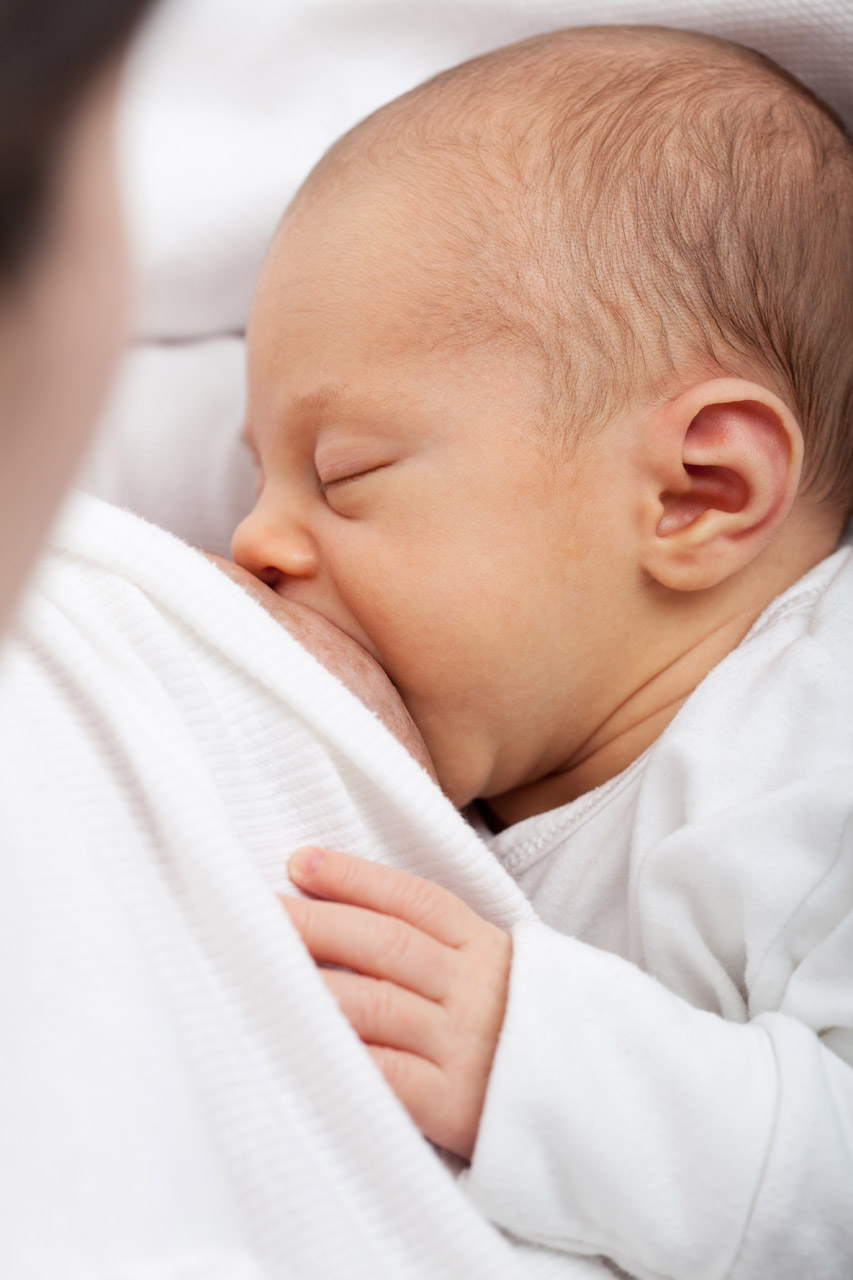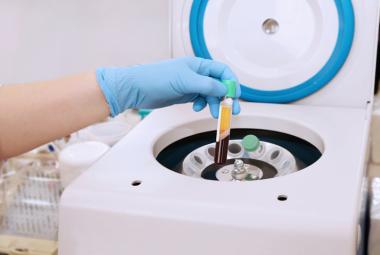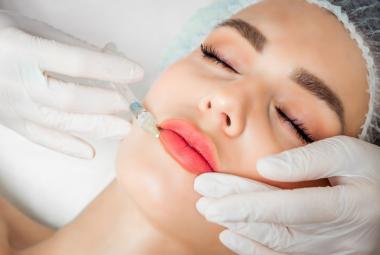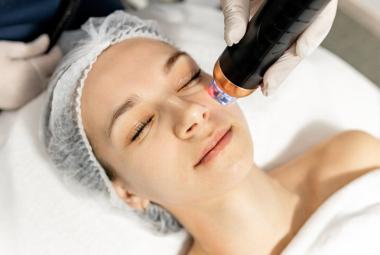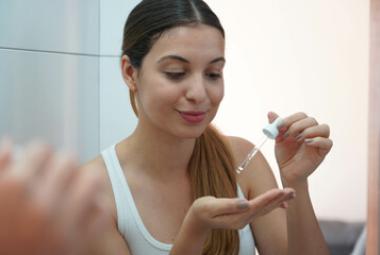A recent study explored the relationship between maternal colonization (bacteria on the mother’s skin surface) with Methicillin Sensitive Staphylococcus Aureus (MSSA), during pregnancy and delivery to determine the association with infant colonization.[1] Staphylococcus aureus is one of the most common causes of community and hospital acquired sepsis (a serious bacterial infection in the blood).[2] Therefore, recognizing a patient’s colonization with MSSA and the antibiotic resistant form of this bacteria, Methicillin Resistant Staphylococcus Aureus (MRSA) is important, especially in vulnerable populations such as those babies admitted to the neonatal intensive care unit (NICU).[2] About 30% of Americans are colonized with MSSA and 1-4% of mothers and infants are colonized with MRSA.[1] Although some of the risk factors for colonization with MSSA are known such as number of household members, breastfeeding, antibiotic exposure, the risk of vertical transmission (passing the bacteria to the infant during delivery because of maternal vaginal colonization) is unknown.
A previous publication from 2003, studied the pattern of MSSA carriage in the first 6 months of life.[2] In this study the authors determined if infants had a similar pattern for colonization as adults and studied the roles of the individual, environment and bacteria on colonization. There appear to be three general patterns of colonization in adults; 20% persistent non-carriers, 20% persistent carriers and 60% intermittent carriers. This study found maternal colonization rates with MSSA to be about 30% and infant colonization rates to be 40 to 50% in the first 8 weeks of life. There was a significant reduction in infant colonization of the nose (21%) by 6 months of age. It was determined that 25% of infants were never colonized with the MSSA and the remaining infants had a different pattern of colonization than adults. It was also noted that about 68% of the mother-infant pairs were colonized with the same strain of MSSA. Exposure to siblings was found to be a possible factor for increasing infant colonization but did not reach significance. The environmental factors found to be significant were breastfeeding and maternal colonization at any time during the 6 months. The association with breastfeeding was not influenced by maternal colonization or the age of the infant (breastfeeding and infant colonization decreased over time). The authors hypothesized that the reason why breastfed infants had a greater chance of colonization may have been from MSSA colonization of the nipples, which may be supported by the fact that breast infections during lactation are typically caused by MSSA.
The most recently published article reviewing the risk of vertical transmission enrolled 629 mother-infant pairs between June 2007 and March 2009, at two centers in the US (Vanderbilt & Memphis).[1] Women were eligible to participate in this prospective study if they were 34 to 36 weeks of gestation. Questionnaires were used to determine risk factors for colonization and swabs of the mother (nasal and vaginal) and infant (nasal and umbilical) were taken to test for MSSA and MRSA during the first 4 months of life.
The factors found to be statistically significant for increasing the risk of infant colonization with MSSA at birth were race and mode of delivery. African American infants (75% vs 41%) and those born vaginally (86% vs 69%) had the highest risk.[1] In determining the association between maternal and infant colonization, this study found the odds of an infant being colonized was significantly higher if the mother was colonized herself. This study had 20 maternal-infant pairs in which the mother was colonized during pregnancy and the infant was colonized within 2 hours of birth, 8 of them had nasal colonization (3 of which were MRSA) and 12 had vaginal colonization (3 of which were MRSA). Of the 20 pairs only two of the infant isolates suggested vertical transmission, as the bacterial strains were exactly the same in the mother. Of the women colonized at delivery, 20 had infants that were colonized at birth and 14 at discharge; colonization peaked at 2 months of age (51 maternal-infant pairs) and declined to 9.3% by 4 months of age (of which 43% were MRSA). This decline in colonization with increasing infant age was also see in the previous study discussed above. [2]
Although this study suggests that breastfeeding is a risk factor for colonization the number of women breastfeeding was not reported; therefore, the effect on colonization is unknown in this set of mother-infant pairs.[1] This study did find a higher rate of colonization with MSSA and MRSA compared to other previously studied populations (10% vs. 2-5% of mothers and 2.5% vs. 1% of infants at delivery carried MRSA). About one third of the MRSA isolated in this trial was the USA300 clone. Horizontal transmission (contact with mother and family members) was the most common mode of colonization of mother-infant pairs in this study and although vertical transmission increased the likelihood of early neonatal colonization (within 2 hours of birth), vertical transmission only occurred in two infants. Even though this study found higher rates of MSSA and MRSA carriage only two infants had clinical infections, which suggests that while infants are colonized with the bacteria the risk of infection is low.
In another study that looked at perinatal transmission, the authors found that of 304 women, 43 were colonized with MSSA (vaginal, nasal or both), 9 had MRSA.[3] Of the 252 infants, 25 were colonized with MSSA (skin, nasal or both) at delivery and/or discharge, 9 had MRSA. Of the mother-infant pairs colonized with bacteria only five were found to have the same strain of MSSA. Five infants from this study developed staphylococcal infections within the first month of life, 3 with small pustule like skin infections, 1 with periorbital cellulitis and 1 with mastitis. Of the five infants with an infection, only one had been colonized in the perinatal period; these infections were from colonization beyond 48 hours of life.
Kawada et al reviewed breast milk and skin samples from eight mothers without mastitis, along with oral cavity and nasal cultures from their infants who were younger than three months of age.[4] There rate of staphylococcus aureus transmission between these mother-infant pairs was 50%, 4 pairs and 1 infant were colonized. Two of the four pairs were found to have MRSA.
Behari et al reported a case of MRSA colonization and infection in pre-term triplets. Routine surveillance cultures, taken due to a recent outbreak of MRSA in the NICU, revealed MRSA colonization starting on day of life 10 for infant A and 18 for infant B. [5] Infant C who was not given breast milk had negative routine cultures and passed away on day of life 15 from premature lung disease. Infant A developed MRSA sepsis on day of life 14, an MRSA eye infection on day of life 18 and a pneumonia from multiple bacteria on day of life 47. Infant B developed a coagulase-negative staphylococcus bacteremia on day of life 6 and was found to have an MRSA eye infection on day of life 70. Breast milk stored prior to colonization of infants A & B was tested on day of life 33 and the cultures grew the same strain of MRSA. This mother had no signs or symptoms of mastitis or other infections due to MRSA.
The trials reviewed supported the findings, that horizontal transmission (maternal and family contact) was one of the greatest risk factors for infant nasal colonization and that direct vertical transmission was less common.[1-5] However, the timing of colonization and infection varied in all five of these studies. The evidence for an increased risk of serious infection from infant colonization with MSSA needs to be replicated with a larger prospective study. At this time it is not clear if interruption of breastfeeding or changes in maternal-infant contact are beneficial for mothers who are colonized with MSSA or MRSA. Future studies focusing on the clinical significance of swabbing mothers to determine maternal colonization, identifying risk factors for infection of infants with colonized mothers & family and interventions such as changes in maternal-infant contact, breastfeeding or recommending decolonization need to be determined before changes in practice can be recommended.[1-5]
In summary, it appears that colonization from mother to child due to close contact may be as prevalent as transmission via the mother’s milk. Thus, until more is known about the transmission of MSSA and MRSA, there is no substantive reason to withhold breastmilk from mothers who are carriers of MSSA or MRSA.
Hilary Rowe BSc(Pharm), PharmD, ACPR., Cynthia Pride RN., Thomas W. Hale, R.Ph.,Ph.D.
InfantRisk Center
Reference
- Jimenez-Truque N, Tedeschi S, Saye EJ et al. Relationship between maternal and neonatal staphylococcus aureus colonization. Pediatrics 2012;129(5): 1-8.
- Peacock SJ, Justice A, Griffiths D et al. Determinants of acquisition and carriage of staphylococcus aureus in infancy. J Clin Microbiol 2003;41(12):5718-25.
- Pinter DM, Mandel J, Hulten KG, Minkoff H, Tosi MF. Maternal-infant perinatal transmission of methicillin-resistant and methicillin-sensitive Staphylococcus aureus. Am J Perinatol. 2009 Feb;26(2):145-51.
- Kawada M, Okuzumi K, Hitomi S, Sugishita C. Transmission of Staphylococcus aureus between healthy, lactating mothers and their infants by breastfeeding. J Hum Lact. 2003 Nov;19(4):411-7.
- Behari P, Englund J, Alcasid G, Garcia-Houchins S, Weber SG. Transmission of methicillin-resistant Staphylococcus aureus to preterm infants through breast milk. Infect Control Hosp Epidemiol. 2004 Sep;25(9):778-80.

